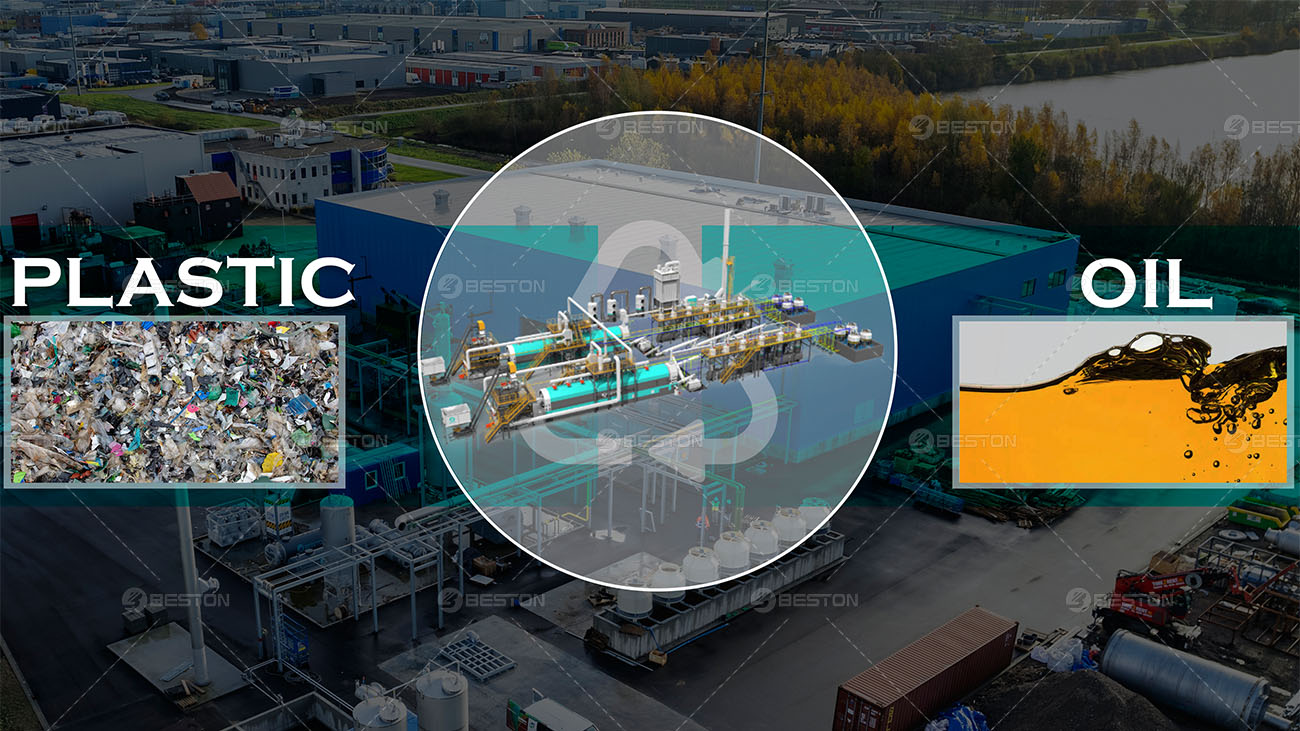The global plastic waste crisis has become one of the most pressing environmental challenges, with millions of tons of plastic ending up in landfills, rivers, and oceans every year. This persistent issue has created significant demand for innovative waste management solutions, among which plastic pyrolysis stands out. By converting plastic waste into valuable products like fuel oil, carbon black, and gas, a pyrolysis plant offers a viable and profitable business opportunity. With increasing global emphasis on sustainable practices, investing in a plastic pyrolysis plant has become not only environmentally beneficial but also financially rewarding.

High Return on Investment Through Fuel Production
One of the most lucrative aspects of a waste plastic pyrolysis plant is its ability to convert plastic waste into usable fuel, such as pyrolysis oil. This oil can be further refined into diesel, gasoline, or kerosene, all of which are in high demand across various industries. The rising global consumption of fuel makes this aspect of the pyrolysis process particularly attractive for investors.
The revenue generated from selling fuel oil is a key contributor to the plant’s profitability. Given that plastic is abundantly available as waste material in most regions, it presents an excellent feedstock for fuel production. In many cases, the production of fuel oil from plastic pyrolysis is more cost-effective than traditional methods of fuel extraction. As demand for alternative fuels grows, the profitability of a pyrolysis plant becomes even more compelling.
Diversification of Byproducts
In addition to fuel oil, a plastic pyrolysis plant produces other valuable byproducts, including carbon black and combustible gases. Carbon black, a byproduct of pyrolysis, is widely used in the production of tires, coatings, plastics, and as a reinforcing agent in rubber manufacturing. The versatility of carbon black increases its commercial appeal, enabling the plant operator to access diverse markets and further increase profitability.
Additionally, the combustible gases produced during the pyrolysis process can be captured and used to fuel the pyrolysis plant itself, significantly reducing operational costs. This not only improves the overall efficiency of the plant but also lowers reliance on external energy sources, contributing to cost savings and making the plant even more profitable. If you want to maximize your investment returns, you may want to consider Beston pyrolysis plant.
Meeting Environmental Regulations and Government Incentives
With tightening environmental regulations, many governments are incentivizing businesses to adopt sustainable technologies. A plastic pyrolysis plant, which helps divert plastic waste from landfills and reduce harmful emissions, aligns with these regulatory goals. Countries are increasingly offering subsidies, tax breaks, and grants for businesses that invest in waste-to-energy technologies like pyrolysis.
In addition to financial incentives, the ability to comply with environmental regulations enhances the long-term sustainability of the pyrolysis plant. As governments worldwide push for stricter waste management and carbon reduction measures, the demand for plastic pyrolysis plants is expected to increase. Businesses that adopt this technology early stand to benefit from both regulatory support and increased market demand for eco-friendly products.
Favorable Pyrolysis Plant Price and Financing Options
The pyrolysis plant price, while varying depending on the size and technology used, has become increasingly competitive as the industry matures. Advances in technology and the availability of financing options have made it more accessible for small to medium-sized enterprises to invest in a pyrolysis plant. Financing schemes, including loans, grants, and government incentives, help ease the capital expenditure required to establish a plant, enabling businesses to start generating returns quickly.
As the global market for sustainable waste-to-energy solutions continues to expand, the demand for pyrolysis plants is expected to rise, driving prices even lower and further improving the profitability of such investments.

Market Demand for Waste-to-Energy Solutions
The growing global focus on waste-to-energy (WTE) technologies further positions the pyrolysis plant as a promising investment. The WTE market is expanding rapidly, driven by the need for alternative energy sources and sustainable waste management practices. As the market for waste-derived fuels continues to expand, plastic pyrolysis offers a timely and profitable solution to a global problem.
Moreover, as the cost of traditional energy sources rises and the public becomes more aware of the environmental impact of plastic waste, businesses and consumers are turning toward more sustainable and cost-effective alternatives. A pyrolysis reactor for sale offers a compelling solution by converting waste plastics into valuable fuels while addressing energy needs.
Scalability and Long-Term Profitability
A plastic pyrolysis plant is a scalable investment, with the potential for significant growth. The modular nature of the plant allows for easy expansion, enabling operators to scale up their operations as demand for pyrolysis products increases. Furthermore, the technology is continually evolving, with newer models offering increased efficiency and higher yield rates, which directly impacts profitability.
As the plant grows and refines its processes, it can process larger quantities of plastic waste, further lowering unit costs and increasing production efficiency. The global trend toward greater waste-to-energy adoption and the ongoing demand for alternative fuels present ample opportunities for long-term profitability.
Low Operational Costs
The operational costs of a plastic pyrolysis plant are relatively low compared to traditional energy production methods. Once the initial investment in the pyrolysis plant is made, ongoing expenses such as labor, maintenance, and raw materials are minimal. The plant’s ability to use waste plastic as its primary feedstock also reduces material costs, which is a significant advantage over plants that rely on more expensive raw materials.
By capturing and utilizing the gases produced during the pyrolysis process for fuel, a pyrolysis plant can further reduce its energy costs. This creates a self-sustaining cycle that maximizes profitability while minimizing external reliance on costly energy resources.